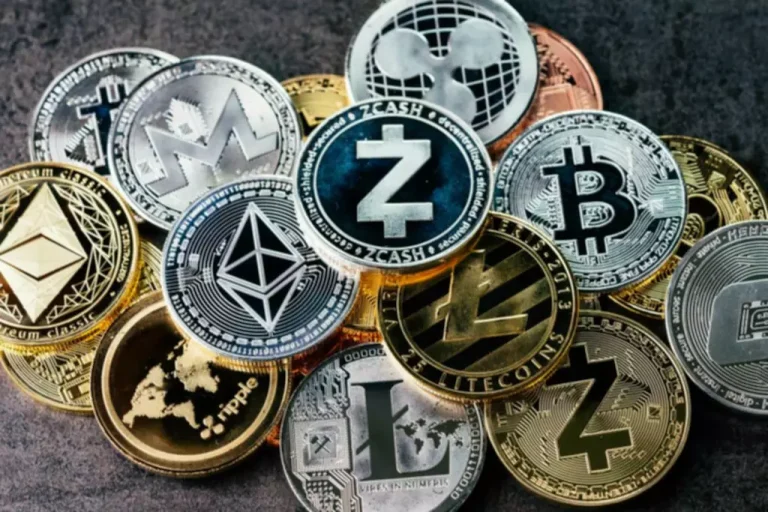While Open Finance is surely going to bring more opportunities, it’s a continuation of what Open Banking has started. Open Finance isn’t a competition to Open Banking but rather an extension that will create even more opportunities for companies and individuals. This will be open Finance vs decentralized finance especially beneficial to users with low financial literacy and provide them with more data-based and personalised resources, which will help to make informed decisions. As of 2017, the World Bank estimated that there were 1.7 billion adults worldwide who were unbanked.
In the U.S. alone, the Federal Reserve reported that 6% of the population was unbanked in 2018, and an additional 16% were underbanked. Some fear that these groups’ lack of credit or banking history could work against them when it comes to open banking, as the data would show an unfair bias against them. While most banks already
understand the value of open banking, adopting open finance trends can be a
step ahead of the competition made in advance. CloudOps automates software delivery, application management, and server management directly from the cloud and encourages more cloud solution usage within a company. If decentralized finance is the wild wild west of banking, where the “red tape” rules and administrators have run for the hills, open finance is the slightly more traditional entity. The formal structure, in place for decades, is changing for a new set of players.
This document is believed to be accurate but is not intended as a basis of knowledge upon which advice can be given. Opinions expressed are those of the author or authors and not necessarily those of the CII group, local institutes, or Societies. The mortgage industry has long remained stagnant with the same manual and cumbersome processes. Applicants have to gather a number of documents and forms, and wait lengthy periods of time before they receive an answer. Applicants with short credit histories are particularly disadvantaged, either being denied or having to accept higher interest rates.
FDATA reported that nearly 90% of data being shared is done by “other technology,” and only 10% is shared using APIs. MX’s approach to security includes a defense-in-depth strategy, supported by policies, processes, security controls, and procedures. In any case, you are not responsible for any of the things your family is trying to make you pay for. It sounds like they’re https://www.xcritical.in/ taking advantage of what they perceive as your good fortune instead of your hard-earned money, much of which goes right back out the door for housing. Regardless, you need to be aligned with regard to how you think about saving and spending before you walk down the aisle, and examine whether any disconnect on that front is about how you view your futures differently.

Automated switching and renewals combined with advice and financial support services are also high up on the Open Finance agenda along with accurate creditworthiness assessments. The end goal is improved financial health driven by market innovation and competition. Elizabeth is a fintech industry writer who creates articles and white papers for Plaid. Account-to-account (A2A) payments are emerging as a disruptive force in the glob… This movement established the rules that allow individuals to share their banking information with third parties through APIs (Application Programming Interfaces). You need to call a family meeting and inform your sister-in-law and sister that they need to figure out a permanent solution for weekend childcare that is not you.
Open banking APIs are not without security risks, such as the potential for a malicious third-party app to clean out a customer’s account. Through this connectivity, businesses, with the consumer’s consent, gain access to customer data, including mortgages, savings accounts, retirement accounts, bills, payroll data, and more. With this information, they have a single snapshot into an entirely new set of people, their current financial footprint, preferences, and more. They can offer critical new and personalized products and services while the consumer retains ownership of their data, including the unbanked and gig workers.
As with open banking, open finance seeks to put control of financial data back in the hands of customers. Both concepts operate on the idea that account holders should determine who can access their information and make payments on their behalf. This made it easier for new entrants and third-party providers to gain access to a new market, improve their product offerings, and increase competition. Open banking allows more developers and businesses to build new FinTech services that compete with large retail banks. Open Finance will bring a number of benefits for businesses and consumers. It will drive the competition and innovation in the financial sector even further and provide consumers with better access to their financial data and more control over it.
It gives them endless options to better meet their financial goals through the thousands of budgeting, investing, lending, and other types of fintech and financial services apps available. Open finance refers to a concept that extends the principles of open banking into a broader financial ecosystem. It involves the use of technology and data sharing to create a more interconnected and transparent financial environment, beyond just banking. Open finance aims to empower consumers by giving them greater control over their financial information and enabling them to access a wider range of financial services and products from various providers. Financial data such as mortgages, savings, pensions, insurance and consumer credit – basically your entire financial footprint – could be opened up to trusted third party APIs if you agree.
Through API technology, a company can access and draw information from bank accounts that could help determine the correct financial products to offer a customer. But at the same time, banks need to make sure that their data remains safe. Open banking participants in the EU and UK can only view customers’ payment data, which tells just half of the story. Still, many financial companies aren’t fully capitalizing on emerging data sharing opportunities.

However, some banks, like Nordea, are already offering more financial services embedded in non-banking applications to support customers’ needs. Permissions Manager is another way that Plaid puts consumers in control of their financial data. Permissions Manager is a no-cost solution that allows financial institutions to give customers visibility and control over their data-sharing connections made through Plaid. With Permissions Manager, banks can build their own consumer permissions portal from within their existing web and mobile experiences, helping them stay at the center of their customers’ financial lives.
- Looking forward, the FCA will work with the government to develop common standards and roadmaps to open finance.
- The easiest way for the industry to effectively make broad-scale changes to open finance technology is to take a unified approach to API protocols, data connectivity standards, and authorization.
- Fame and money don’t corrupt everyone but it’s certainly rare that they make people more empathetic and less self-centered.
- This will be made possible by being able to compare products and services in a more convenient way, such as PFM dashboards.
It could also help consumers get a more accurate picture of their own finances before taking on debt. Another app might help visually impaired customers better understand their finances through voice commands. Open banking can also help small businesses save time through online accounting and help fraud detection companies better monitor customer accounts and identify problems sooner. Data Access is an open API platform built on FDX standards that improves time-to-market and reduces costs to deliver secure data sharing, as well as provide the groundwork for greater insights about customer behaviors, trends, and needs. It provides financial institutions with the ability to monitor and manage where consumers are sharing their financial data and the tools to implement a more secure data-sharing experience with token-based connectivity. Open Finance will further level the playing field for the banking industry, as well as provide consumers with an even better customer experience.
Open Banking describes a practice of financial institutions sharing data with regulated third-party service providers via secure APIs. The third-party service providers use APIs to access customer account data and initiate payments, all with the customer’s consent. First, there was open banking — a considerable step forward in democratizing the financial services industry. With third-party access to banking via application programming interfaces (APIs), consumers were able to connect with a broader range of financial products and take greater control over their financial future. Through the use of networked accounts, open banking could help lenders get a more accurate picture of a consumer’s financial situation and risk level in order to offer more profitable loan terms.
The goal of Open Banking is to create greater financial transparency and provide customers with better access to and more control over their financial data. Cryptopedia does not guarantee the reliability of the Site content and shall not be held liable for any errors, omissions, or inaccuracies. The opinions and views expressed in any Cryptopedia article are solely those of the author(s) and do not reflect the opinions of Gemini or its management. The information provided on the Site is for informational purposes only, and it does not constitute an endorsement of any of the products and services discussed or investment, financial, or trading advice.